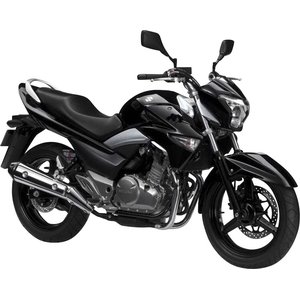Suzuki GW250 Inazuma (2012-2017): A Balanced Commuter with Big-Bike Appeal
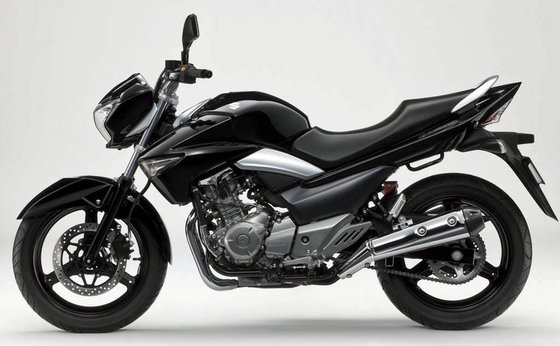
Introduction
The Suzuki GW250 Inazuma, produced from 2012 to 2017, is a motorcycle that defies expectations for its class. Designed as a commuter-friendly machine with a parallel-twin engine and a chassis that mimics the styling of larger bikes, the Inazuma (Japanese for "lightning") strikes a compelling balance between practicality and urban flair. After spending a week with this machine, it’s clear why it became a favorite for riders seeking reliability without sacrificing style. Let’s dive into what makes this 250cc twin a standout in its category.
Engine & Performance
At the heart of the Inazuma lies a 248cc liquid-cooled parallel-twin engine with a SOHC configuration, producing 24–26 hp at 8,500 RPM and 22–24 Nm of torque at 6,500 RPM. The engine’s undersquare design (53.5 mm bore x 55.2 mm stroke) prioritizes low-to-midrange grunt, making it exceptionally smooth for city riding.
Key Highlights:
- Fuel Injection: Throttle response is crisp, with minimal hesitation even in stop-and-go traffic.
- Balancer Shaft: Engine vibrations are remarkably subdued for a small twin, even at highway speeds.
- 6-Speed Transmission: The close-ratio gearbox allows riders to keep the engine in its sweet spot, whether navigating tight streets or cruising at 100 km/h (62 mph).
On the Road:
In urban environments, the Inazuma feels eager. The twin’s torque curve lets you surge ahead of traffic from stoplights, while the 183 kg (403 lbs) wet weight remains manageable for new riders. Highway performance is adequate but not thrilling—the bike will hold 110–120 km/h (68–75 mph), though overtaking requires patience. Fuel efficiency shines here, with tested averages of 3.8 L/100 km (62 US mpg), making it a frugal companion for daily commutes.
Design & Comfort
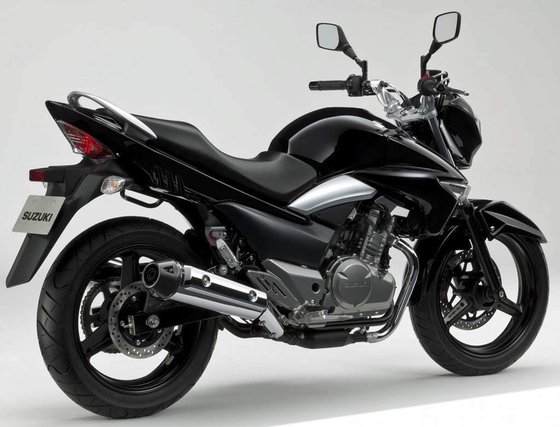
The Inazuma’s semi-aggressive styling borrows cues from Suzuki’s B-King, giving it a muscular, big-bike presence. The naked version features a minimalist headlight cluster and chrome-accented exhaust, while the GW250F variant adds a full fairing for sportier aesthetics.
Ergonomics:
- 780 mm (30.7") Seat Height: Accessible for shorter riders, with a narrow profile that aids footing.
- Upright Riding Position: Clip-on handlebars and mid-set footpegs create a neutral posture, reducing fatigue on longer rides.
- Instrumentation: A hybrid analog-digital dash includes a gear position indicator, fuel gauge, and customizable RPM shift light—a rarity in this segment.
Practicality:
The 13.3-liter (3.5 US gal) fuel tank offers a 300–350 km (186–217 mi) range, while the pillion seat and passenger grab rail make tandem rides viable for short distances.
Handling & Braking
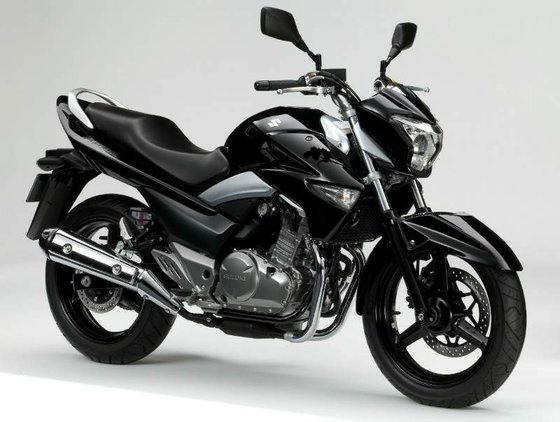
The Inazuma’s semi-double cradle frame and suspension setup prioritize stability over agility. With a 1,430 mm (56.3") wheelbase and 26-degree rake, it’s no canyon carver, but it inspires confidence for urban maneuvering.
Suspension:
- Front: Telescopic forks with 120 mm (4.7") of travel absorb potholes competently.
- Rear: A 7-step preload-adjustable monoshock handles bumps smoothly, though it can feel overwhelmed on rough roads.
Brakes:
- Front: A single 290 mm disc with a Nissin 2-piston caliper provides adequate stopping power but lacks initial bite.
- Rear: The 240 mm disc is predictable, ideal for modulating speed in traffic.
Tires:
The 110/80-17 front and 140/70-17 rear tires offer decent grip for dry conditions but struggle in heavy rain. Consider upgrading to sport-touring rubber for all-weather confidence.
Competition
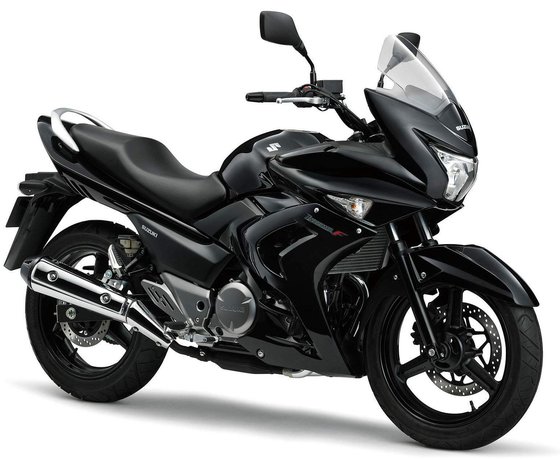
The Inazuma faced stiff competition in the 250–300cc segment. Here’s how it stacks up:
1. Honda CBX250 Twister
- Engine: 249cc air-cooled single-cylinder (20 hp).
- Pros: Lighter (154 kg / 340 lbs), lower maintenance.
- Cons: Vibrations at high RPM, dated styling.
- Verdict: The Twister is cheaper to run, but the Inazuma’s twin-cylinder refinement and modern features justify the premium.
2. Kawasaki Ninja 300
- Engine: 296cc liquid-cooled parallel-twin (39 hp).
- Pros: Faster acceleration, sportier handling.
- Cons: Higher price tag, aggressive ergonomics.
- Verdict: The Ninja dominates in performance, but the Inazuma’s relaxed ergos and fuel efficiency better suit commuters.
3. Yamaha YZF-R3
- Engine: 321cc liquid-cooled parallel-twin (42 hp).
- Pros: Track-ready chassis, premium components.
- Cons: Overkill for city use, higher insurance costs.
- Verdict: The R3 is a weekend warrior; the Inazuma is the weekday workhorse.
Why Choose the Inazuma?
It’s the Goldilocks option: smoother than singles, more affordable than larger twins, and versatile enough for both city errands and weekend escapes.
Maintenance
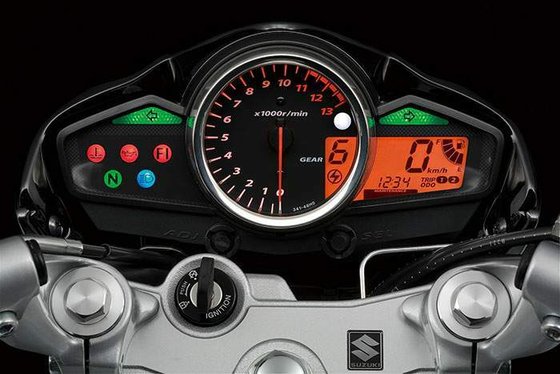
The GW250’s mechanical simplicity translates to low upkeep costs. Here are key considerations:
- Oil Changes
- Interval: Every 6,000 km (3,728 mi) with SAE 10W-40 (2.4L with filter).
-
Tip: Use Suzuki’s SG-rated oil or a JASO MA2-compatible alternative for clutch longevity.
-
Chain Care
- Adjustment: Every 1,000 km (621 mi). Stock chain is a 520-series with 116 links.
-
Upgrade: Fit a sealed O-ring chain for reduced maintenance.
-
Valve Adjustments
- Interval: Every 12,000 km (7,456 mi).
-
Clearances: Intake 0.05–0.10 mm, Exhaust 0.17–0.23 mm (cold).
-
Cooling System
-
Fluid: Replace every 2 years with ethylene glycol-based coolant (1.35L capacity).
-
Brake Service
- Pads: OEM replacements work well, but sintered pads improve bite.
- Fluid: Flush with DOT 4 annually.
Common Upgrades:
- Sprockets: Dropping 1–2 teeth on the rear sprocket improves highway cruising.
- Seat Cushion: The stock seat can feel firm after an hour—add a gel insert.
- Windscreen: For GW250F owners, a taller screen reduces wind fatigue.
Final Thoughts
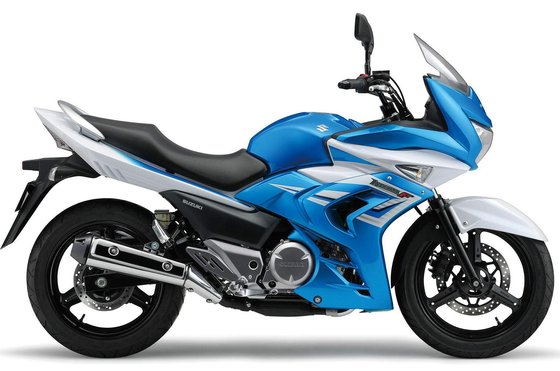
The Suzuki GW250 Inazuma isn’t about raw power or cutting-edge tech—it’s about delivering a no-fuss, enjoyable riding experience. Its twin-cylinder engine, user-friendly ergonomics, and standout fuel economy make it a compelling choice for commuters and returning riders. While it’s since been succeeded by larger models, the 2012–2017 Inazuma remains a smart buy on the used market, particularly for those prioritizing reliability over outright speed.
At MOTOPARTS.store, we’ve got everything to keep your Inazuma in peak condition—from OEM-spec chains to performance brake pads. Explore our catalog and make your GW250 truly yours.


Specifications sheet
| Engine | |
|---|---|
| Stroke: | Four-stroke |
| Max power: | 19 kW | 25.0 hp |
| Max torque: | 24 Nm |
| Fuel system: | Fuel Injection |
| Lubrication: | Wet sump |
| Max power @: | 8500 rpm |
| Displacement: | 248 ccm |
| Max torque @: | 6500 rpm |
| Configuration: | Inline |
| Cooling system: | Liquid cooled |
| Compression ratio: | 11.5:1 |
| Number of cylinders: | 2 |
| Valves per cylinder: | 2 |
| Dimensions | |
|---|---|
| Wheelbase: | 1430 mm (56.3 in) |
| Wet weight: | 183 |
| Seat height: | 780 mm (30.7 in) |
| Overall width: | 760 mm (29.9 in) |
| Overall height: | 1075 mm (42.3 in) |
| Overall length: | 2145 mm (84.4 in) |
| Ground clearance: | 165 mm (6.5 in) |
| Fuel tank capacity: | 13.3 L (3.5 US gal) |
| Drivetrain | |
|---|---|
| Final drive: | chain |
| Chain length: | 116 |
| Transmission: | 6-speed |
| Rear sprocket: | 46 |
| Front sprocket: | 14 |
| Maintenance | |
|---|---|
| Rear tire: | 140/70-17 |
| Engine oil: | 10W40 |
| Front tire: | 110/80-17 |
| Idle speed: | 1400 ± 100 rpm |
| Brake fluid: | DOT 4 |
| Spark plugs: | NGK CR7E |
| Spark plug gap: | 0.8 |
| Coolant capacity: | 1.35 |
| Forks oil capacity: | 0.676 |
| Engine oil capacity: | 2.4 |
| Engine oil change interval: | Every 5000 km or 2 years |
| Valve clearance (intake, cold): | 0.05–0.10 mm |
| Valve clearance check interval: | 24,000 km / 15,000 mi |
| Valve clearance (exhaust, cold): | 0.17–0.23 mm |
| Recommended tire pressure (rear): | 2.5 bar (36 psi) solo, 2.8 bar (41 psi) with passenger |
| Recommended tire pressure (front): | 2.5 bar (36 psi) |
| Additional Features | |
|---|---|
| Warranty: | 12-month unlimited mileage limited warranty |
| Fuel efficiency: | 2.5–3.8 L/100 km (62–94 mpg) |
| Instrumentation: | Analog tachometer, digital gear indicator, LCD speedometer, fuel gauge, maintenance reminder |
| Chassis and Suspension | |
|---|---|
| Frame: | Semi-double cradle steel |
| Rear brakes: | 240 mm single disc |
| Front brakes: | 290 mm single disc (ABS optional on some models) |
| Rear suspension: | Swingarm with monoshock, 7-way adjustable preload |
| Front suspension: | Telescopic fork, oil damped |
| Rear wheel travel: | 125 mm (4.9 in) |
| Front wheel travel: | 120 mm (4.7 in) |



